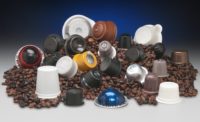Remember the Tropicana Orange Juice carton redesign? They took away the iconic straw in the orange and lost over 20% market share in just two months, while spending $35 million on the campaign.
Consumer embrace of a new brand begins before they ever try the product. If the packaging is a turnoff, they may never get to what’s inside. First impressions matter. For example, in an article on packaging fails, there is the story about SunChips and their biodegradable bag made from plants. What millennial wouldn't love that? But sales began to decline shortly after launch because the bag made a loud “grumbling” noise that consumers said reminded them of a jet engine or lawnmower. “It even spawned a Facebook group called ‘Sorry but I can’t hear you over this SunChips bag.’”
Examples like these demonstrate the power of packaging. FoodDIVE reports that in a recent survey of 250 CPG companies, 75% plan to increase spending on packaging — that’s up from 40% in 2017.
The article illustrates in detail that innovation is driven by the necessity to captivate consumers. Hence the proliferation of disruptive techniques such as holography, cubes, AR, digital bar coding and more. There is also the consumer demand for sustainable solutions such as biodegradable, compostable and recyclable packaging.
Some brands are breaking through and getting results. One example is Nutella’s redesign. The company used algorithms to create a limited edition of collectible jars in a range of eye-catching colors, shapes and patterns, such as zigzags, polka dots and splotches. “The 7 million different package designs sold out within a month.” I’m betting they didn’t take this risk without doing consumer research on the packaging. It’s just too expensive.
The Shift to Consumer Testing for Packaging
Big CPG companies spend a lot of time and money developing products, but the packaging often doesn’t get the same emphasis. Brand owners (marketers, designers and product developers) need to work with researchers to identify the functional and emotional benefits most important to the target consumers. This should inform the creation of packaging prototypes with strong consumer appeal that reinforces the concept and positioning.
Prototypes also need to check the boxes for cost and feasibility so crucial to a brand’s success. Finally, they should be put in front of consumer panels to gain insights. Only when compelling prototypes incorporating the major consumer touch points are identified should large-scale confirmatory testing begin.
Here are some of the key questions that packaging research should answer:
- Does package design fit your product concept?
- Does it stand out on shelf; how unique is it?
- Does it take a creative approach to restraints such as budget, time to market, and types of materials?
- Can it be executed without unreasonable demands?
- Does it reflect the appropriate functional and emotional benefits?
- Does it check all the boxes for sensory appeal on shelf?
Earlier in my career as a sensory researcher, we did studies where the product was the same; only the packaging differed. Consumers consistently rated products higher for performance when they preferred the packaging. In the words of leading brand packaging expert Charles Spence, “A growing body of both anecdotal and empirical research now shows that changing the multidisciplinary design of the packaging can significantly affect people’s judgment of the contents.”
A great example of a brand that leveraged the power of packaging is POM Wonderful. Founder Lynne Resnick’s story is one of entrepreneurship and timing meets healthy eating trend. She bought a pistachio orchard that just happened to have a few pomegranate trees. Research on the health properties of the fruit revealed significant benefits. Thus was born POM Wonderful. Its iconic hourglass bottle not only showcases the beauty of the rich red juice but mirrors the product’s promise. The shape recalls the look of a healthy body, just what the juice promotes.
Emotion Drives Behavior
While overall liking is key, brand owners also need to understand the emotional drivers of packaging appeal. Does the package align with the brand promise, whether it’s safety, convenience, healthiness, sex appeal, luxury, sophistication, freshness or sustainability? Just think about the emotions evoked by Tiffany’s peacock blue box — just one of the reasons the brand dominates the fine jewelry category.
Today’s Qual/Quant Approach
At Curion Insights, we recognize that our main goal as researchers is to mitigate risk on behalf of brands. Research needs to be holistic and thorough. Both qualitative and quantitative methodologies should be utilized for optimal results.
The qualitative approach identifies key features that enhance product trial and repeat purchase. Using this tool for packaging allows us to tap attributes such as alignment with brand, concept, the product’s function, ergonomics, usability, materials, believability and quality. We also learn what is most important to the target consumer and what drives them crazy. All these insights inform the design of prototypes.
On the quantitative side, we draw from an extensive national database of consumers. They provide feedback on prototypes. This includes overall liking and drivers of appeal, such as how the package fits the product concept, uniqueness against competitors and the overall emotional profile.
The value of this qual/quant method is that it combines the rich learnings from speaking to and interacting with consumers — with the numerical validation that comes from data analytics. This helps transform packaging concepts into best-possible prototypes that deliver a compelling consumer experience, often resulting in long lasting brand loyalty — the ultimate goal.
Curion is a leader in sensory and consumer product research and serves Fortune 500 and other blue-chip customers in the food & beverage, personal care, fine fragrance, and home & fabric care industries. In 2018 alone, the company tested 97,000 consumers in its facilities in San Francisco, Chicago, Dallas and New York metropolitan areas. Curion's insights provide data such as: product readiness for launch, consumer purchase decision process, competitive landscape and more to its clients. The result of a merger between Q Research Solutions and Tragon Corp., Curion brings a wealth of knowledge and experience to the consumer and sensory science industry. The company pioneered many of the sensory methodologies considered industry standards today, including Quantitative Descriptive Analysis (QDA) and Partnership Solutions (PS).




